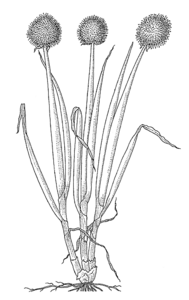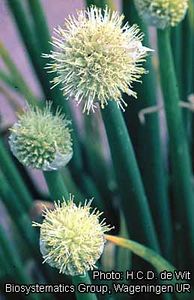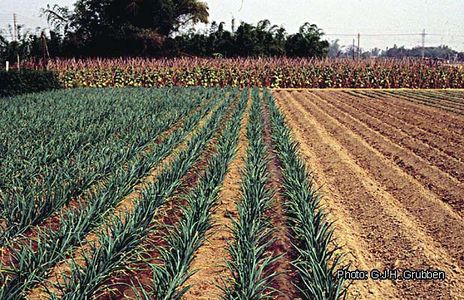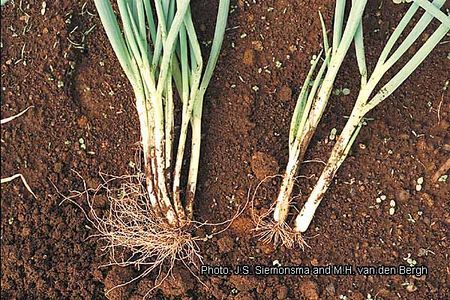Difference between revisions of "Allium fistulosum"
| Line 11: | Line 11: | ||
|english = | |english = | ||
|french = | |french = | ||
| − | }} | + | }}{{Box |
| − | + | ||
| − | {{Box | + | |
|title = Uses summary | |title = Uses summary | ||
|color = lightgreen | |color = lightgreen | ||
|text = | |text = | ||
}} | }} | ||
| − | |||
| − | |||
== Description == | == Description == | ||
<gallery mode="packed"> | <gallery mode="packed"> | ||
| Line 41: | Line 37: | ||
== Uses == | == Uses == | ||
| + | CIBOUL. TWO-BLADED ONION. WELSH ONION. Siberia, introduced into England in 1629<ref>Booth, W. B. ''Treas. Bot.'' 1:40. 1870.</ref>. The Welsh onion acquired its name from the German walsch (foreign)<ref>Pickering, C. ''Chron. Hist. Pls.'' 582. 1879.</ref>. It never forms a bulb like the common onion but has long, tapering roots and strong fibers<ref>Booth, W. B. ''Treas. Bot.'' 1:40. 1870.</ref>. It is grown for its leaves which are used in salads. McIntosh<ref>McIntosh, C. ''Book Gard.'' 2:41. 1855.</ref> says it has a small, flat, brownish-green bulb which ripens early and keeps well and is useful for pickling. It is very hardy and, as Targioni-Tozzetti<ref>Targioni-Tozzetti ''Journ. Hort. Soc. Lond.'' 9:147. 1855.</ref> thinks, is probably the parent species of the onion. It is mentioned by McMahon<ref>McMahon, B. ''Amer. Gard. Col.'' 582. 1806.</ref> in 1806 as one of the American garden esculents; by Randolph in Virginia before 1818; and was cataloged for sale by Thorburn in 1828, as at the present time. [[Allium (Sturtevant, 1919)#Allium fistulosum|Sturtevant, ''Notes on edible plants'', 1919]]. | ||
| + | <references/> | ||
== References == | == References == | ||
Revision as of 11:05, 14 July 2019
Allium fistulosum
| Order | [[]] |
|---|---|
| Family | [[]] |
| Genus | Allium |
2n =
Origin : area of origin
wild or cultivated
Contents
Description
Popular names
Classification
Cultivars
History
Uses
CIBOUL. TWO-BLADED ONION. WELSH ONION. Siberia, introduced into England in 1629[1]. The Welsh onion acquired its name from the German walsch (foreign)[2]. It never forms a bulb like the common onion but has long, tapering roots and strong fibers[3]. It is grown for its leaves which are used in salads. McIntosh[4] says it has a small, flat, brownish-green bulb which ripens early and keeps well and is useful for pickling. It is very hardy and, as Targioni-Tozzetti[5] thinks, is probably the parent species of the onion. It is mentioned by McMahon[6] in 1806 as one of the American garden esculents; by Randolph in Virginia before 1818; and was cataloged for sale by Thorburn in 1828, as at the present time. Sturtevant, Notes on edible plants, 1919.
- ↑ Booth, W. B. Treas. Bot. 1:40. 1870.
- ↑ Pickering, C. Chron. Hist. Pls. 582. 1879.
- ↑ Booth, W. B. Treas. Bot. 1:40. 1870.
- ↑ McIntosh, C. Book Gard. 2:41. 1855.
- ↑ Targioni-Tozzetti Journ. Hort. Soc. Lond. 9:147. 1855.
- ↑ McMahon, B. Amer. Gard. Col. 582. 1806.





